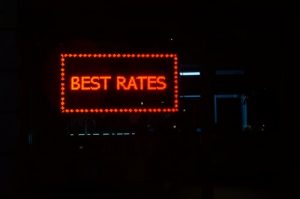A longer repayment period qualifies buyers for lower payments or a more expensive home. But the interest rate will be higher and you will pay more interest over the life of the loan.
Are you considering a 30-year fixed mortgage? Good idea. This grandfather of all mortgages is the choice of nine out of ten buyers.
It’s no mystery why 30-year fixed-rate mortgages are so popular. The repayment period being long, the monthly payments are low. Because the rate is fixed, homeowners can count on monthly payments that stay the same no matter what, although taxes and insurance premiums may change.
Definition of a 30-year fixed-rate mortgage
A 30-year mortgage is a mortgage that will be fully repaid in 30 years if you make all the payments as planned. Most 30-year mortgages have a fixed interest rate, which means that the interest rate and the payments stay the same as long as you keep the mortgage.
The Benefits of a 30-Year Fixed-Rate Mortgage
Lower payment: a 30-year term allows a cheaper monthly payment by extending the repayment of the loan over a long period
Flexibility – You can repay the loan faster by increasing your monthly payment or by making additional payments. However, you can always use the smallest payment if necessary.
A 30-year mortgage is a mortgage that will be fully repaid in 30 years if you make all the payments as planned.
Predictability: It’s good to keep your mortgage payment the same regardless of the economic storm or rising interest rates
More homes for the mortgage: lower payments mean you may qualify for a more expensive home
Higher tax deduction – Under current tax laws, homebuyers can deduct mortgage interest from their taxes. In the first years of a loan, most of your mortgage payments are used to pay interest, which is a huge tax deduction.
Easier to qualify: With smaller payments, more borrowers are eligible for a 30-year mortgage
Allows you to finance other objectives: after making mortgage payments each month, there is more money left for other objectives
The Cons of a 30-Year Fixed-Rate Mortgage
Higher interest rates: Since the risk of lenders of not being reimbursed extends over a longer period, they charge higher interest rates
More interest paid: paying interest for 30 years significantly increases the total cost compared to a shorter loan
Slow equity growth: It takes longer to build an equity component in a home
Risk of over-indebtedness: Qualifying for a larger mortgage can encourage some people to buy a bigger and better house that is more difficult to pay. Don’t forget to leave a mattress for the inevitable surprises of life.
Higher maintenance costs – Choosing a more expensive house means higher property taxes, maintenance, and even higher utility bills. “A $100,000 house could require annual maintenance of $2,000, while a $ 600,000 house would require $12,000 a year,” said Adam Funk, a licensed financial planner in Troy, Michigan. It requires 1% to 2% of the purchase price for maintenance.
How to speed up your savings
With a little planning, you can combine the security of a 30-year mortgage with one of the main benefits of a shorter mortgage: a faster way to own a home. How is it possible? Pay off the loan earlier. As simple as that.
If you want to try it out, ask your lender for a repayment plan that shows how much you would pay each month to fully own the home in 15 years, 20 years, or any other period of your choice. Your payments will be higher with a shorter duration, but you will not be subject to a higher payment.



